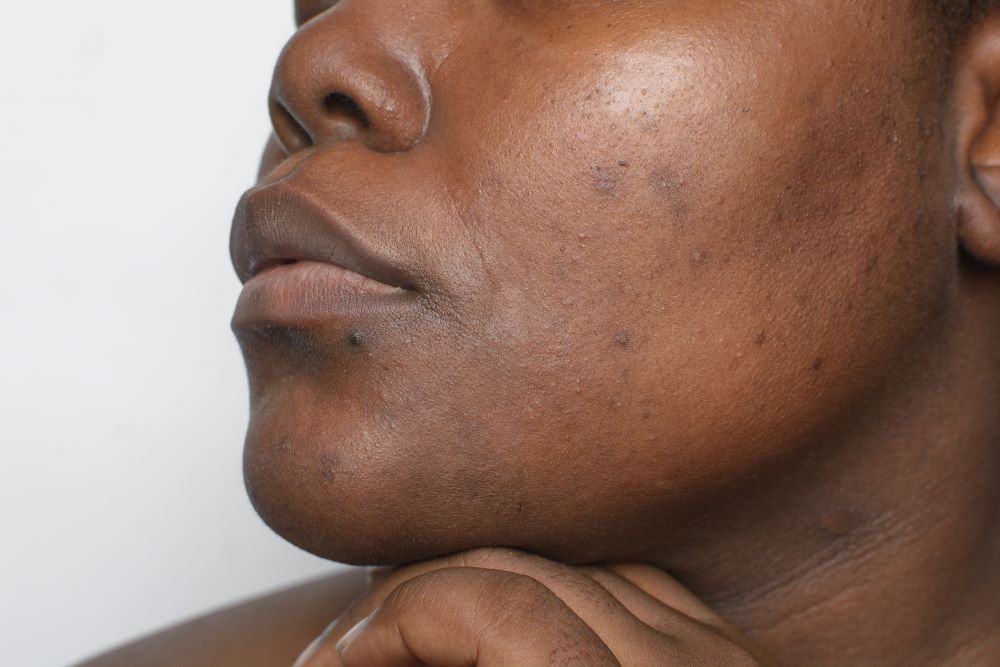
Hyperpigmentation is a common skin concern that affects people of all ages and skin types. Whether it’s from sun damage, acne scars, aging, or hormonal changes, dark spots can be stubborn and frustrating. Fortunately, science-backed skincare has introduced solutions that actually work. Among these, the hyperpigmentation cream remains a trusted ally in the battle against uneven skin tone. But how do these creams actually work to reduce pigmentation? Let’s explore the science behind them.
What is Hyperpigmentation?
Hyperpigmentation is the result of an overproduction of melanin, the pigment responsible for the color of your skin, hair, and eyes. When the skin produces too much melanin in one area, it creates dark patches or spots that stand out from the rest of your complexion.
There are several types of hyperpigmentation:
- Post-inflammatory hyperpigmentation (PIH): Occurs after an injury or inflammation, such as acne.
- Melasma: Triggered by hormonal changes, often during pregnancy.
- Sunspots: Caused by prolonged sun exposure.
- Freckles: Genetically inherited and intensified by UV exposure.
While harmless, these patches can impact confidence and skin clarity, prompting many to seek topical treatments like a fade cream for dark spots.
How Hyperpigmentation Creams Work
Hyperpigmentation creams are formulated with active ingredients that address dark spots at a cellular level. These ingredients work by interrupting the melanin production cycle, accelerating skin turnover, or promoting cell repair.
Let’s break down some of the mechanisms:
1. Melanin Inhibition
One of the most effective ways that hyperpigmentation cream works is by slowing down melanin production. Active compounds like niacinamide, azelaic acid, and kojic acid inhibit tyrosinase—an enzyme that helps produce melanin.
By limiting tyrosinase activity, the skin naturally produces less pigment, helping existing dark spots to fade and preventing new ones from forming.
2. Gentle Exfoliation
Many fade creams also include gentle exfoliants like alpha hydroxy acids (AHAs) or beta hydroxy acids (BHAs). These ingredients encourage cell turnover, helping to slough off pigmented cells on the surface and reveal fresh, even-toned skin beneath.
This dual action—reducing melanin production while removing existing dark cells—is key to visible results.
3. Antioxidant Support
Vitamin C, one of the most popular ingredients in fade creams, is an antioxidant powerhouse. It not only brightens the skin but also neutralizes free radicals that can worsen hyperpigmentation. By calming inflammation and protecting against environmental stress, antioxidants enhance the overall effectiveness of fade cream for dark spots.
4. Skin Barrier Repair
A compromised skin barrier can worsen hyperpigmentation, especially in individuals with sensitive skin. Modern hyperpigmentation creams often include ingredients like ceramides or peptides that strengthen the skin’s natural defenses, ensuring that it remains hydrated, resilient, and better able to heal from pigmentation triggers.
Key Ingredients That Make a Difference
Understanding the key ingredients in a hyperpigmentation cream can help you choose the most effective one for your skin needs:
- Niacinamide (Vitamin B3): Inhibits melanin transfer and strengthens the skin barrier.
- Kojic Acid: Derived from fungi, it lightens dark spots by blocking tyrosinase.
- Tranexamic Acid: Reduces discoloration from melasma and other hormonal triggers.
- Retinoids (Vitamin A derivatives): Speed up cell turnover and encourage regeneration.
- Vitamin C (Ascorbic Acid): Brightens and protects with antioxidant power.
- Licorice Extract: Soothes and naturally lightens pigmented areas.
These ingredients, when used consistently and correctly, can significantly reduce the appearance of dark spots over time.
The Role of Consistency in Results
One of the biggest misconceptions about fade cream for dark spots is that results will appear overnight. The truth is, hyperpigmentation takes time to develop—and time to fade. Depending on the severity and cause of your pigmentation, you may begin to notice improvements within 4 to 12 weeks of consistent use.
Consistency is key. Applying a hyperpigmentation cream once a week won’t deliver results. Most products are designed for daily or twice-daily use. Combining these with a daily SPF is also crucial, as sun exposure can reverse your progress quickly.
Common Myths About Hyperpigmentation Creams
Myth #1: Stronger always means better.
Some believe that higher concentrations of active ingredients lead to faster results. However, overly potent creams can irritate the skin, leading to more inflammation—and ironically, more pigmentation.
Myth #2: All dark spots are the same.
Different types of pigmentation respond to different treatments. A dermatologist can help identify whether you’re dealing with melasma, sun damage, or PIH and recommend the right fade cream for dark spots.
Myth #3: Natural remedies are safer.
While some natural ingredients are effective, not all have the clinical backing or potency to treat stubborn hyperpigmentation. It’s essential to balance safety and efficacy.
Combining Creams With Lifestyle Choices
Topical treatments are just one piece of the puzzle. For optimal results, pair your hyperpigmentation cream routine with healthy lifestyle practices:
- Sun Protection: Daily sunscreen use prevents UV-induced melanin production.
- Hydration: Keeps skin plump and promotes healing.
- Balanced Diet: Nutrient-rich foods support skin regeneration from the inside out.
- Stress Management: High cortisol levels can worsen pigmentation in some people.
These habits support your skin’s healing process and enhance the effectiveness of your treatment.
When to See a Professional
While over-the-counter options can deliver excellent results for many, some cases of hyperpigmentation require professional intervention. If your dark spots are persistent, worsening, or affecting your quality of life, consider seeing a dermatologist. They may recommend:
- Prescription-strength creams
- Chemical peels
- Laser treatments
- Microneedling
Combining professional care with home use of hyperpigmentation cream can yield impressive results.
Hyperpigmentation can be stubborn, but understanding the science behind it—and how a well-formulated fade cream for dark spots works—empowers you to make informed skincare choices. From reducing melanin production to enhancing skin regeneration, today’s creams are formulated with potent ingredients designed to restore clarity and balance to your complexion.
By practicing consistency, protecting your skin, and choosing the right ingredients, you’re on the path to achieving brighter, more even-toned skin. Remember: healthy skin takes time, but with science on your side, results are within reach.

